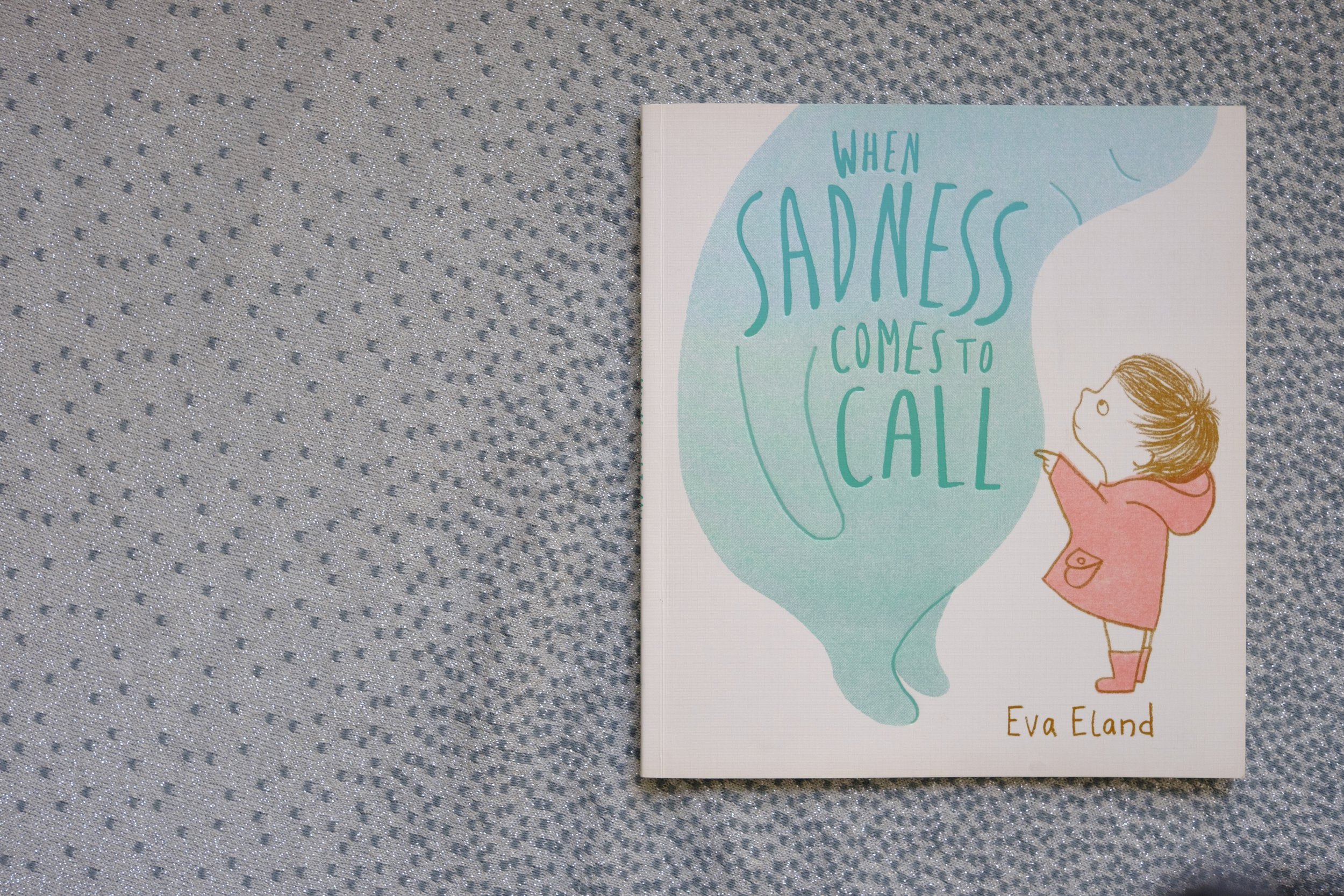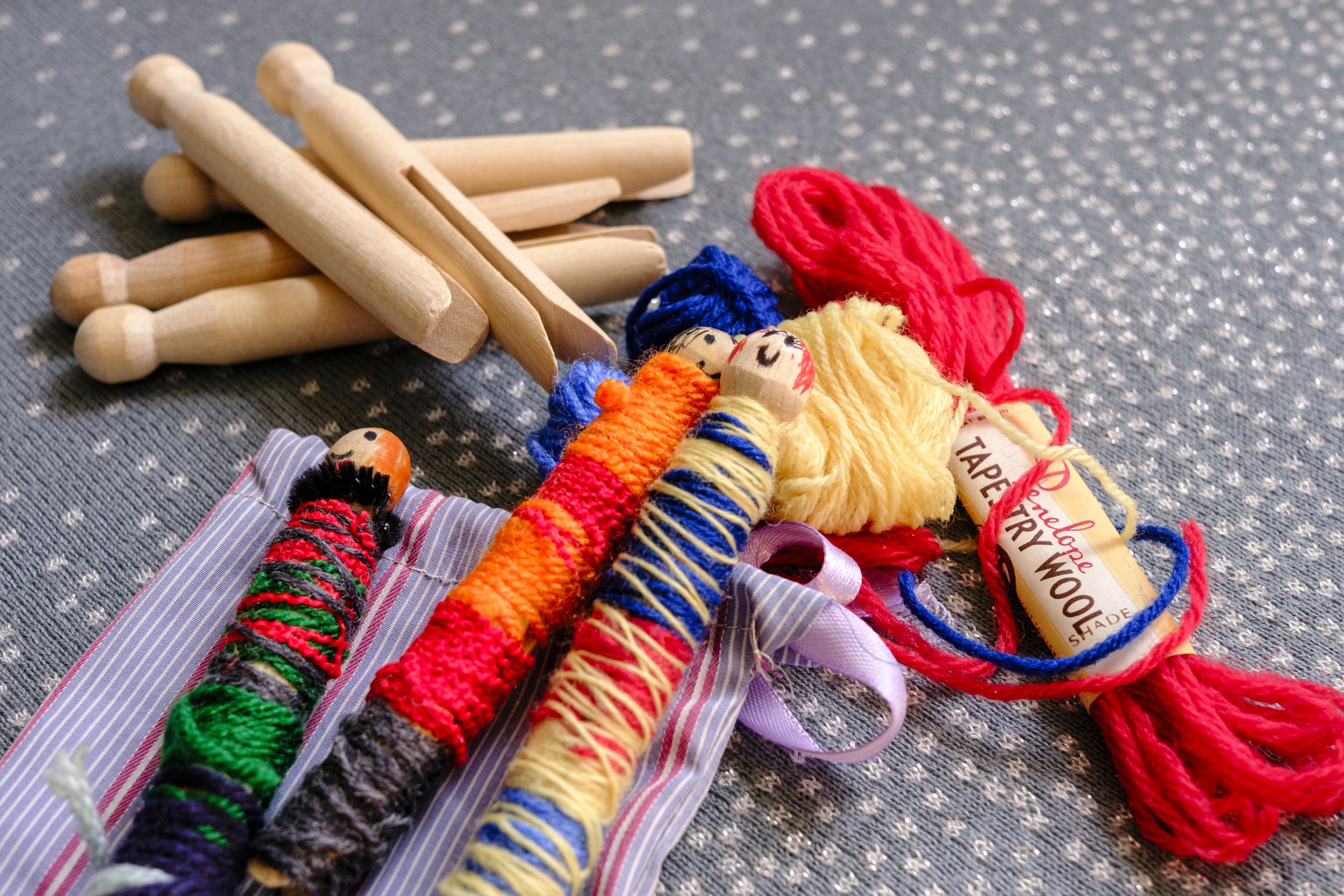
When sadness comes to call by eva eland
Before reading this book with a bereaved child, explain that it is a book about the emotion/feeling called sadness. Tell them that we don’t know why the main character is sad in the book and we don’t need to. Reassure them that no one needs to share what makes them sad in this session, unless they want to. Remind them that the group is a safe space to explore our thoughts and feelings in if we want to.
Key Questions to ask after reading the book:
This book is less about asking specific question whilst you read it with a bereaved child, it’s more about letting them express their thoughts and feelings in response to the narrative of simple sentences and beautifully created illustrations when sadness comes to call. However, some good prompts may be:
How does the main character feel in this illustration? How does sadness make you feel?
Explain that feeling sad is normal and it’s important to share your feelings with someone you trust.

Activity: Making a worry doll
Worry dolls were first created by indigenous people from the Highlands in Guatemala many generations ago. The idea is to tell your worries to the doll before you go to sleep - worries which may otherwise keep you awake at night. Then, put the doll under your pillow where they can do the worrying for you to give you a peaceful night’s rest.
You will need an old fashioned wooden dolly peg for each child (available from craft shops), fine felt tip pens or biros and some coloured wool. You could also use a small piece of fabric or cloth as a coat for your worry doll as detailed in Step 3 below. With organisation and good communication with a bereaved child’s surviving parent, this could be a small piece of their deceased parent’s clothing. This conversation will need to be handled carefully and gently though and should be adult to adult rather than asking a child to go home and find a piece of clothing to bring in for this craft activity.
Using coloured pens draw a face and hair on the top of the wooden dolly peg. Try out your pens first, some can bleed colour which the children may find frustrating.
Choose a length of coloured wool and start to wrap it around the wooden peg. Change to another section of coloured wool when you want to. You can also mix the colours and create patterns.
If you’re adding a coat to your worry doll, do this by lying the doll on top of the piece a cloth roughly a square cut to the same size as the doll’s neck to where its feet would be (or shorter - it’s as a child would like it). Scrunch the material together at the doll’s ‘waist’ and tie more wool around as if it’s a belt. the ‘coat’ will fan out either side of the ‘belt’.
If you have very creative children in your group, you may like to thread small beads or stick sequins to the wool to decorate the dolls further. The possibilities are endless!
Ending the session:
If you have time, re-read When Sadness Comes to Call and discuss again all the things the main character does with Sadness. Ask the children to reflect on how these things may help when you’re feeling sad, e.g. doing something you enjoy like drawing, listening to music or drinking hot chocolate. What about going outside? How might that help?
Show the children the page where the the author suggests listening to Sadness and asking where it comes from and what it needs. Where might sadness come from? What might it need? Reinforce the importance of talking to people who can listen to you when you’re feeling sad. The worry dolls will help you begin to express your worries aloud. Encourage the children to talk to a trusted adult when they’re feeling sad. It may be appropriate to introduce the idea that we grieve because we loved, grief comes where love came first and is a very natural human reaction to experience when someone we really love dies. Be mindful here of complex grief, you will know your children’s experiences and can adapt this discussion to their needs.
End this session with a discussion about what makes us feel comforted - a thought, a memory, a picture, a song… Reassure bereaved children that however they feel, it’s ok to feel just as they do at any given time.
